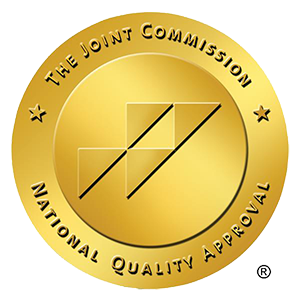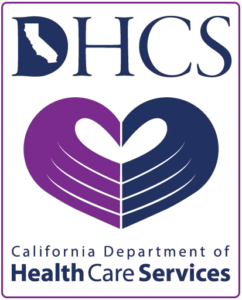When it comes to effective addiction recovery, understanding the tools available can be life-changing. Medications like naltrexone and naloxone play an essential role in medication-assisted treatment (MAT), particularly in addressing addiction and co-occurring mental health disorders. According to the CDC, over 100,000 people in the U.S. lost their lives to drug overdoses in 2022 alone, with opioids being a major factor. These staggering numbers highlight the urgent need for interventions that work.
At Surf City Detox in Huntington Beach, California, we focus on comprehensive programs, including detox, residential treatment, and dual-diagnosis support. This blog will break down the key differences and uses of naltrexone vs naloxone, helping you better understand how these medications can support recovery and save lives. As a leading detox center in Huntington Beach, we aim to educate and support individuals through every stage of the recovery process.
Introduction to Naltrexone and Naloxone
Naltrexone and naloxone are opioid antagonists, meaning they block the effects of opioids at their receptors. However, their applications differ significantly. Naltrexone is primarily used in the management of alcohol and opioid dependence, while naloxone is primarily employed as an emergency treatment for opioid overdose.
Learning about these medications is vital in today’s context, where opioid abuse remains a significant public health crisis. By distinguishing their functionalities, users can ensure that they receive the most appropriate treatment based on their specific circumstances.

Naltrexone works by binding to the same receptors in the brain that opioids do, but instead of activating them, it prevents the euphoric effects associated with opioid use. This mechanism helps reduce cravings and the risk of relapse in individuals recovering from addiction. It is often prescribed as part of a comprehensive treatment plan that includes counseling and support groups, emphasizing the importance of a holistic approach to recovery. Moreover, naltrexone’s long-acting formulation can provide sustained support for individuals striving to maintain sobriety over time.
On the other hand, naloxone is a life-saving medication that can rapidly reverse the effects of opioid overdose, restoring normal breathing and consciousness in minutes. It is often administered intranasally or via injection, making it accessible for bystanders in emergencies. The growing availability of naloxone in pharmacies and community programs has been pivotal in reducing overdose fatalities empowering individuals and families to act quickly in critical moments. Additionally, education on recognizing the signs of an overdose and knowing how to administer naloxone is crucial, as it equips communities with the tools needed to combat the opioid crisis effectively.

Chemical Composition and Mechanism of Action
Both naltrexone and naloxone are derived from morphine but have been chemically altered to enhance their effectiveness as antagonists. Understanding their chemical structures enables healthcare professionals to make informed decisions about their use.
Naltrexone is a long-acting opioid receptor antagonist. By blocking the mu-opioid receptors in the brain, it prevents the euphoric effects associated with opioid use. This mechanism is crucial during the treatment of opioid addiction, as it can deter relapse by eliminating the perceived benefits of drug use.
Naltrexone is available in both oral and injectable forms, allowing flexibility in treatment options. The oral form is taken daily, while the injectable form is administered once a month, providing a convenient option for individuals struggling with adherence. Additionally, the injectable form can help reduce the stigma associated with daily medication, as it removes the need for frequent dosing and allows patients to focus on their recovery journey without the constant reminder of their addiction.
Naltrexone has shown promise in treating alcohol dependence, as it can reduce cravings and the pleasurable effects of alcohol consumption. This dual application highlights its versatility and underscores the importance of understanding its pharmacological properties in various addiction treatment contexts.
In contrast, naloxone is designed for rapid action. It acts quickly to reverse the effects of opioid overdose, primarily targeting the same mu-opioid receptors as other opioids. Upon administration, naloxone displaces the opioids from these receptors, reversing respiratory depression and sedation, which are life-threatening conditions associated with an overdose.
The administration of naloxone can be done intranasally or intramuscularly, making it accessible for both medical professionals and laypersons.
It is a critical component of harm reduction strategies and is often distributed in communities to combat overdose deaths. Community training programs are increasingly being implemented to educate individuals on recognizing the signs of an overdose and effectively administering naloxone, empowering friends and family members of those at risk.
Naloxone’s role in public health extends beyond emergency response; it also serves as a vital tool in destigmatizing addiction. By making naloxone widely available and promoting its use, communities can foster a more supportive environment for individuals struggling with substance use disorders, encouraging them to seek help without fear of judgment. The widespread adoption of naloxone has the potential to save countless lives and facilitate a broader conversation about addiction and recovery in society.
Primary Uses and Applications
While both medications share some properties, the specific contexts in which they are used highlight their distinct roles in treating substance use disorders and emergencies.
Naltrexone in Addiction Treatment
Naltrexone is often prescribed to help individuals overcome alcohol use disorder and opioid dependence. It works best when combined with psychosocial therapies, enabling a comprehensive approach to addiction treatment.
Patients on naltrexone report a decrease in cravings and an enhanced capacity to refrain from substance use. By mitigating withdrawal symptoms and reducing the rewarding effects of alcohol and opioids, naltrexone aids in maintaining sobriety.
Additionally, studies have shown that naltrexone can help improve the overall quality of life for those in recovery, as it allows individuals to engage more fully in their daily activities without the overshadowing influence of cravings. This medication can also support long-term recovery by encouraging participation in support groups and other therapeutic interventions, fostering a sense of community and accountability among peers.
Naloxone in Overdose Reversal
The primary application of naloxone is in emergencies involving opioid overdoses. It is a lifesaving medication that can be administered while waiting for emergency medical services.
Because of its rapid action, naloxone is effective in restoring normal breathing patterns in individuals who have experienced an overdose. Its availability and use have significantly contributed to reducing overdose fatalities in communities across the globe.
Naloxone can be administered by bystanders, making it a crucial tool in combating the opioid crisis. Training programs and initiatives aimed at educating the public about naloxone use have proliferated, empowering individuals to act swiftly in emergencies. This proactive approach not only saves lives but also raises awareness about the importance of addiction treatment and the need for supportive resources for those struggling with substance use disorders.
Administration Methods
The methods of administering naltrexone and naloxone vary greatly, reflecting their different uses. Each route of administration influences the onset of action and convenience for the patient or caregiver.
Naltrexone can be taken orally as a daily pill or injected as a monthly depot formulation. The choice between these options often depends on the patient’s lifestyle, adherence capabilities, and the treatment plan outlined by the healthcare provider.
Oral naltrexone requires consistent daily use, which may be challenging for some individuals. On the other hand, the injectable version offers a long-term solution, minimizing the frequency of doses and helping to promote a higher rate of compliance.
Naloxone can be administered via various routes depending on the scenario. Intranasal sprays provide a noninvasive option, while intramuscular injections can be administered deeper into muscular tissues for quicker systemic action.
The ease of use and availability of naloxone have led to its widespread distribution in communities, enabling peers, family members, and even bystanders to respond effectively to an overdose emergency.

Naltrexone vs Naloxone: Efficacy and Duration of Effects
The efficacy and duration of action are pivotal when deciding which medication to use. Naltrexone and naloxone exhibit different pharmacokinetics, which play a crucial role in their overall effectiveness.
Naltrexone’s Long-Term Impact
Naltrexone’s effects can last for 24 hours or longer, making it suitable for daily management of cravings and episodic use. However, the long-lasting effects also necessitate proper patient education—because taking opioids while on naltrexone can precipitate withdrawal symptoms.
This enduring action allows for stable and ongoing treatment, fostering a supportive environment for recovery. Continuous monitoring and supportive therapies can help maximize the benefits of naltrexone.
Naloxone’s Immediate Action
Naloxone is known for its swift action, often reviving individuals within moments of administration. The effects, however, are not long-lasting and may require multiple doses, especially in cases of long-acting opioid overdoses.
Therefore, while naloxone can be a critical first-line aid in overdose events, users must seek further medical attention immediately following its administration, as the risk of relapse into respiratory depression remains.

Naltrexone vs Nalexone: Side Effects and Safety Considerations
While both medications can be life-saving, they are not without their respective side effects and safety profiles. Understanding these can mitigate risks associated with their use.
Common side effects of naltrexone include nausea, headache, dizziness, and the potential for liver toxicity with prolonged use. Patients must consult healthcare providers regarding pre-existing liver conditions before starting naltrexone therapy. Additionally, a sudden return to opioid use while on naltrexone can be dangerous, as it may lead to an increased risk of overdose due to the altered tolerance levels.
Naloxone’s side effects are typically minimal but may include withdrawal symptoms such as agitation, nausea, and vomiting in individuals who are dependent on opioids. Although it is a safe and effective medication for reversing overdose, understanding its implications is essential for both the administrator and the recipient.
Get Help For Addiction Today! Detox Safely at Surf City
Understanding the differences between naltrexone and naloxone is essential in the fight against addiction and the challenges of dual-diagnosis treatment. These powerful medications each serve a unique purpose—whether it’s helping to prevent relapse or reversing the effects of an overdose—and they underline the importance of tailored, evidence-based care.
At Surf City Detox in Huntington Beach, CA, we are committed to providing a safe and supportive environment for recovery, offering services like detox, residential treatment, and specialized dual-diagnosis programs. If you or a loved one is struggling with addiction, know that help is available, and recovery is possible. Contact Surf City Detox today and take the first step toward a healthier, more hopeful future.
Dr. Eric Chaghouri is a 2007 graduate from the University of California, Los Angeles, where he earned his B. A. in Biology with Summa Cum Laude honors. While at UCLA, he helped the men’s varsity volleyball team earn a National Championship in 2006. He was named the UCLA Scholar-Athlete of the Year in 2007.
He earned his medical degree from the Keck School of Medicine in 2011. He completed his internship training in 2008 at Cedars-Sinai Medical Center and the remaining three years of residency in general adult psychiatry at the Los Angeles County and University of Southern California Medical Center. He served as the Chief Resident in psychiatric emergency services during his fourth year of residency. He also served as Resident Clinical Instructor and Volunteer Faculty in the Department of Psychiatry at the Keck School of Medicine.
After completing residency, Dr. Chaghouri accepted a fellowship position in forensic psychiatry at the prestigious USC Institute of Psychiatry and Law. His scholarly activities included publishing in Legal Digest and presenting research findings at the Keck School of Medicine annual conference.
Since completing his forensic psychiatry fellowship, he has established a successful and thriving practice in Southern California, focusing on treatment of co-occurring psychiatric and addictive disorders. He has developed a strong clinical team of practitioners who share similar goals and philosophies regarding psychiatric treatment, including providing cutting-edge interventional treatments for psychiatric conditions. He works in an array of capacities with attorneys, courts, and other parties in actual or potential litigation. He also has extensive experience consulting and providing opinions on psychiatric issues for major television networks. Dr. Chaghouri’s interests include addiction medicine, substance use disorders, forensic psychiatry, medical ethics, psychological autopsy, gender wellness, and evidence-based treatment of psychiatric conditions.



